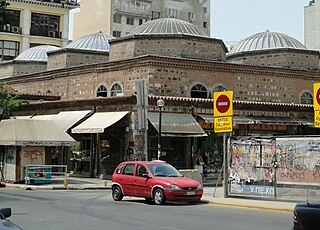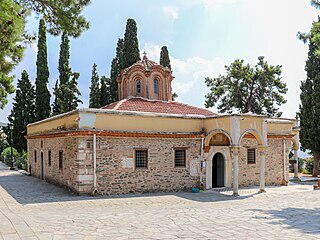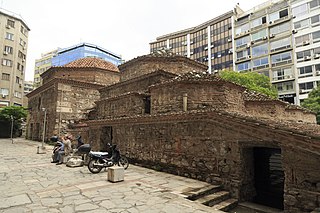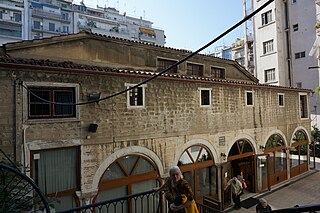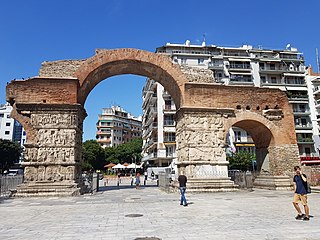25 Sights in Thessaloniki Municipal Unit, Greece (with Map and Images)
Legend
Premium Sights
Book tickets, guided tours and activities in Thessaloniki Municipal Unit.
Guided Free Walking Tours
Book free guided walking tours in Thessaloniki Municipal Unit.
Welcome to your journey through the most beautiful sights in Thessaloniki Municipal Unit, Greece! Whether you want to discover the city's historical treasures or experience its modern highlights, you'll find everything your heart desires here. Be inspired by our selection and plan your unforgettable adventure in Thessaloniki Municipal Unit. Dive into the diversity of this fascinating city and discover everything it has to offer.
Sightseeing Tours in Thessaloniki Municipal UnitActivities in Thessaloniki Municipal Unit1. White Tower of Thessaloniki
The White Tower of Thessaloniki is a monument and museum on the waterfront of the city of Thessaloniki, capital of the region of Macedonia in northern Greece. The present tower replaced an old Byzantine fortification, known to have been mentioned around the 12th century, that the Ottoman Empire reconstructed to fortify the city's fortress some time after Sultan Murad II captured Thessaloniki in 1430. During the period of Ottoman rule, the tower became a notorious prison and the scene of numerous mass executions, most famously of the Janissaries who revolted during the reign of Mahmud II.
2. Statue of Chrisostomos of Smyrna
Chrysostomos Kalafatis, also known as Saint Chrysostomos of Smyrna, Chrysostomos of Smyrna and Metropolitan Chrysostom, was the Greek Orthodox metropolitan bishop of Smyrna (İzmir) between 1910 and 1914, and again from 1919 until his death in 1922. He was born in Triglia in the then Ottoman Empire in 1867. He aided the Greek campaign in Smyrna in 1919 and was subsequently killed by a lynch mob after Turkish troops occupied the city at the end of the Greco-Turkish War of 1919–1922. He was declared a martyr and a saint of the Eastern Orthodox Church by the Holy Synod of the Church of Greece on 4 November 1992.
3. Memorial for Grigoris Lambrakis
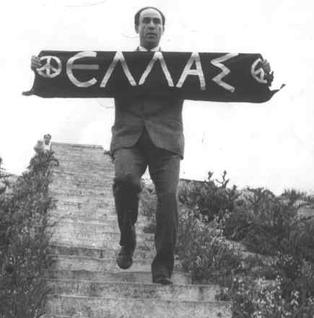
Grigoris Lambrakis was a Greek politician, physician, athlete, and lecturer. He participated in track and field sports and was a member of the faculty of the School of Medicine at the University of Athens. A member of the Greek resistance to Axis rule during World War II, he later became a prominent anti-war activist. His assassination by right-wing zealots that were covertly supported by the police and military provoked mass protests and led to a political crisis.
4. Hagios Demetrios
The Church of Saint Demetrius, or Hagios Demetrios, is the main sanctuary dedicated to Saint Demetrius, the patron saint of Thessaloniki, dating from a time when it was the second largest city of the Byzantine Empire. Since 1988, it has been on the UNESCO World Heritage List as a part of the site Paleochristian and Byzantine monuments of Thessaloniki.
5. Hagia Sophia
The Hagia Sophia is a church located in Thessaloniki, Greece. With its current structure dating from the 7th century, it is one of the oldest churches in the city still standing today. Because of its outstanding Byzantine art and architecture, in addition to its importance in early Christianity, it is one of several monuments in Thessaloniki listed as a UNESCO World Heritage Site in 1988.
6. Rotunda
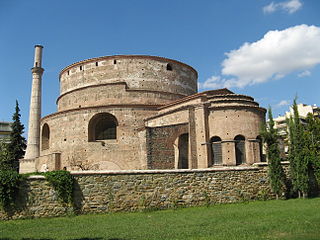
The Rotunda is a 4th-century domed circular building in Thessaloniki, similar to the Pantheon in Rome. Its original use is not known, but various hypotheses have been put forward so far: that there was a temple of Zeus or the Kabeiri, that it was constructed by Caesar Galerius as his mausoleum or as a throne room in the palace complex. It was converted into a temple during the early Christian period, which some researchers identify with the temple of Asomatous Forces mentioned in Byzantine sources. In 1591 it was converted into a mosque by Sheikh Chortaji Suleiman Efendi. After the liberation of Thessaloniki in 1912, it was dedicated to Agios Georgios. It is included in the Early Christian and Byzantine monuments of Thessaloniki as a UNESCO World Heritage Site.
7. Panagia Chalkeon
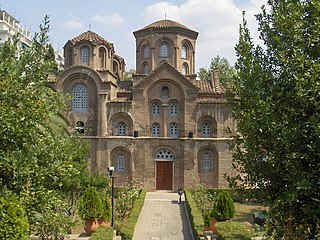
The Church of Panagia Chalkeon is an 11th-century Byzantine church in the northern Greek city of Thessaloniki. The church's well-preserved Byzantine architecture and testimony to the importance of Thessaloniki in early and medieval Christianity led it to be inscribed on the UNESCO World Heritage List in 1988 along with other Paleochristian and Byzantine monuments of Thessaloniki.
8. Museum of the Macedonian Struggle
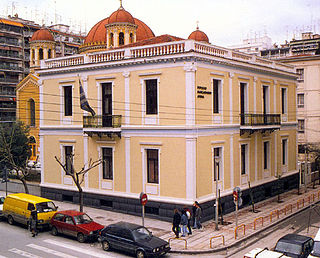
The Museum for the Macedonian Struggle is located in the centre of the city Thessaloniki in Central Macedonia, Greece. It occupies a neo-classical building designed by the renowned architect Ernst Ziller and built in 1893. In its six ground-floor rooms the museum graphically illustrates the modern and contemporary history of Greek Macedonia. It presents the social, economic, political and military developments that shaped the presence of Hellenism in the region. This approach enables the visitor to form a global picture, not only of the revolutionary movements in the area, but also of the rapidly changing society of the southern Balkans and its agonizing struggles to balance between tradition and modernization.
Wikipedia: Museum for the Macedonian Struggle (Thessaloniki) (EN), Website
9. Heptapyrgio
The Heptapyrgion, modern Eptapyrgio, also popularly known by its Ottoman Turkish name Yedi Kule, is a Byzantine and Ottoman-era fortress situated on the north-eastern corner of the Acropolis of Thessaloniki in Greece. Despite its name, which in both languages means "Fortress of Seven Towers", it features ten, and was probably named after the Yedikule Fortress in Constantinople. It served as the major redoubt of the city's acropolis, as well as the seat of its garrison commander in Ottoman times, until the late 19th century. It was then converted to a prison, which remained open until 1989. References to the infamous Yedi Kule prison abound in the Greek rebetika songs. Restoration and archaeological work began in the 1970s and continues to this day.
10. Church of the Acheiropoietos
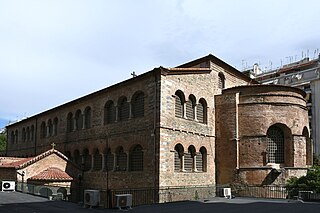
The Church of the Acheiropoietos is a 5th-century Byzantine church in the northern Greek city of Thessaloniki, Central Macedonia. It is located in the city's centre, at Agias Sofias street opposite Makedonomachon square. Because of its outstanding early Byzantine architecture, the church was inscribed on the UNESCO World Heritage List in 1988 along with other Paleochristian and Byzantine monuments of Thessaloniki.
11. Church of the Holy Apostles
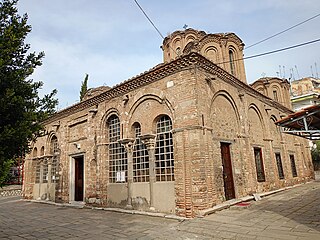
The Church of the Holy Apostles is a 14th-century Byzantine church in the northern Greek city of Thessaloniki. Because of its outstanding Byzantine mosaics and architecture, and its testimony to the importance of Thessaloniki in early and medieval Christianity, the church is inscribed on the UNESCO World Heritage List along with other Paleochristian and Byzantine monuments of Thessaloniki.
12. Moni Latomou
The Church of Hosios David is a late 5th-century church in Thessaloniki, Greece. During Byzantine times, it functioned as the katholikon of the Latomos Monastery, and was adorned with rich mosaic and fresco decoration, which was renewed in the 12th–14th centuries. The church is dedicated to David the Dendrite. Many surviving elements of the Byzantine decoration are of high artistic quality, especially the 5th-century apse mosaic the Icon of Christ of Latomos. Under Ottoman rule, the building was converted into a mosque, until it was reconsecrated as a Greek Orthodox church in 1921, thus receiving its present name. In 1988, this monument was included among the Paleochristian and Byzantine monuments of Thessaloniki on the list of World Heritage Sites by UNESCO.
13. New Mosque
The Yeni Mosque is a historical mosque in Thessaloniki, Greece. It was built by Italian architect Vitaliano Poselli in 1902 for the city's Dönmeh community, crypto-Jewish converts to Islam. However, when the Donmeh left the city during the population exchange between Greece and Turkey, it was used to house the Archaeological Museum of Thessaloniki in 1925. Today, it serves as an exhibition center.
14. St. Nicolas Orphanos
The Church of Saint Nicholas Orphanos is an early 14th-century Byzantine church in the northern Greek city of Thessaloniki. Covered in outstanding Byzantine frescoes, the church is inscribed on the UNESCO World Heritage List along with other Paleochristian and Byzantine monuments of Thessaloniki, demonstrating the importance of Thessaloniki in early Christian history.
15. St. Panteleimon
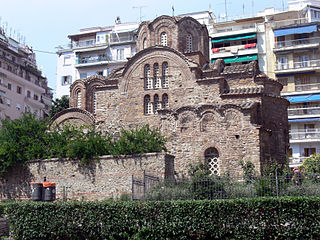
The Church of Saint Panteleimon is a late Byzantine church Built in the 14th century in Thessaloniki, Greece. Because of its well-preserved Byzantine architecture and its testimony to the importance of Thessaloniki to early and medieval Christianity, the church was inscribed on the UNESCO World Heritage List in 1988 along with several other Paleochristian and Byzantine monuments of Thessaloniki.
16. Church of the Metamorphosis of the Sotir
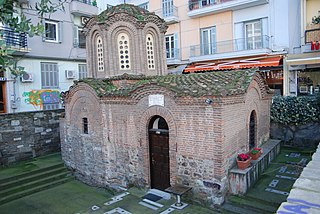
The Church of the Transfiguration of the Saviour is a 14th-century Byzantine chapel in Thessaloniki, Greece. It is a UNESCO World Heritage Site as one of the Paleochristian and Byzantine monuments of Thessaloniki.
17. Thessaloniki Concert Hall
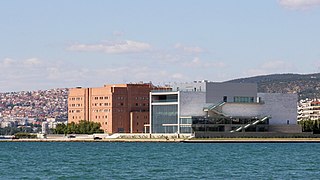
Thessaloniki Concert Hall is a centre for the performing arts in Thessaloniki, Greece. It opened in 2000 on land donated by the Greek state. The complex has two main buildings: M1, with an auditorium that seats 1400; and M2, in more contemporary style by Japanese architect Arata Isozaki, with a number of smaller performance spaces.
18. Ιερός Ναός Παμμεγίστων Ταξιαρχών
The Pammegistoi Taxiarches church is a Byzantine church located in the Upper Town of Thessaloniki, Greece. The church was built in the 14th century, and served as a mosque during the Ottoman period, before it was turned back into a church in 1912. The church underwent significant modifications during the 1950s and the 1960s, and unlike other Byzantine churches in Thessaloniki, a new section was added in neo-Byzantine style.
19. Grigorios Palamas Church (Metropolitan Church of Thessaloniki)
The Metropolitan Church of Saint Gregory Palamas is a Church in Thessaloniki, Greece. It belongs to the Metropolis of Thessaloniki and is under the administration of the Orthodox Church of Greece. It is dedicated to Saint Gregory Palamas, a 14th-century theologian known for his writings and teachings on hesychasm.
20. Bedesten
The Bedesten of Thessaloniki is a historical Ottoman market in the city of Thessaloniki, Greece, built during the reign of Sultan Mehmed II. It is located on Venizelou and Solomou streets, near the Hamza Bey Mosque and the city's old town hall. A bedesten is a type of Ottoman old market, and is derived from the Arabic word bez meaning fabric.
21. Vlatadon Monastery
Vlatades Monastery or Vlatadon Monastery is a monastery in Ano Poli, Thessaloniki, Greece. Built in the 14th century during the late era of the Byzantine Empire, it is a UNESCO World Heritage Site along with 14 other Paleochristian and Byzantine monuments of Thessaloniki because of its Byzantine architecture and importance of Thessaloniki during early and medieval Christianity. It is believed to have been built on the former site of Jason's house.
22. Giahoudi Haman Turkish Bath
The Yahudi Hamam is an Ottoman-era bath in Thessaloniki, Greece. Located at the intersection of Vasileos Irakleiou and Frangini streets, the bath dates to the 16th century. Its name means "Bath of the Jews", as the area was predominantly settled by Sephardi Jews. It was also named Pazar Hamam, due to its location in the central market-place of the city.
23. Ιερός Ναός Παναγίας Δέξιας
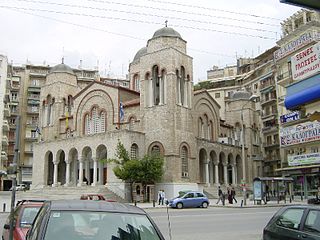
The Church of Panagia Dexia is a parish church of Thessaloniki and belongs to the Holy Metropolis of Thessaloniki. It is located on Egnatia Street, in the city center. The architectural type of the church is cruciform with a dome and two bell towers.
24. Ιερός Ναός Αγίου Αθανασίου Θεσσαλονίκης
The church of Agios Athanasios is a Christian church in Thessaloniki, Greece. The present church was built in 1818. It is located in the city center, at the intersection of Egnatia and Socratous streets.
25. Arch of Galerius
One of the most characteristic monuments of Thessaloniki is the Triumphal Arch of Galerius, also known as Kamara, located on the upper side of Egnatia Street and a short distance from the Rotunda. It is one of the most famous meeting points for residents and visitors of the city.
Share
How likely are you to recommend us?
Disclaimer Please be aware of your surroundings and do not enter private property. We are not liable for any damages that occur during the tours.
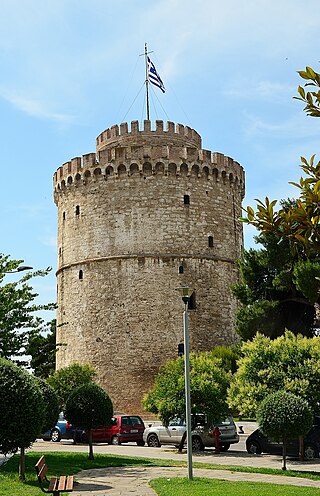
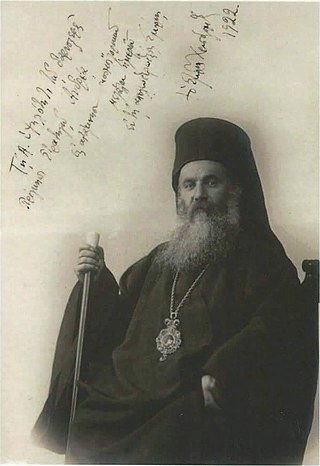
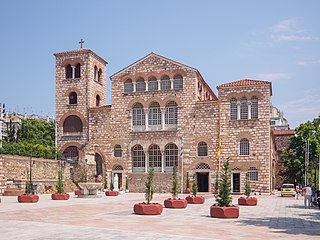
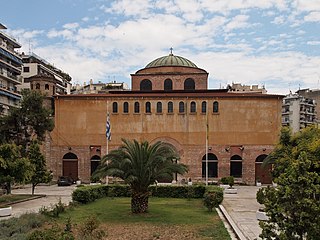
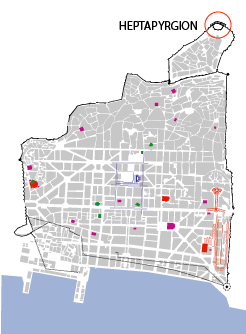
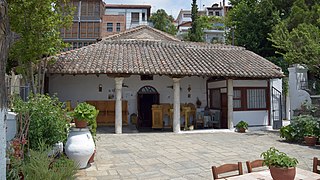
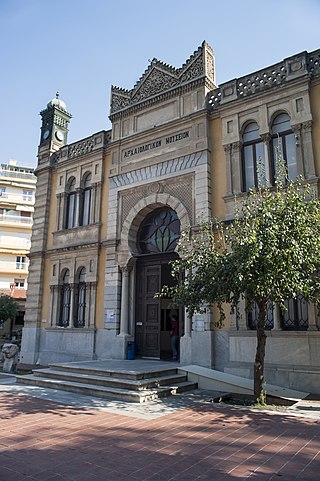
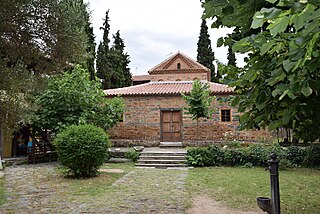
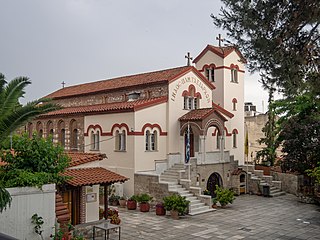
.jpg)
